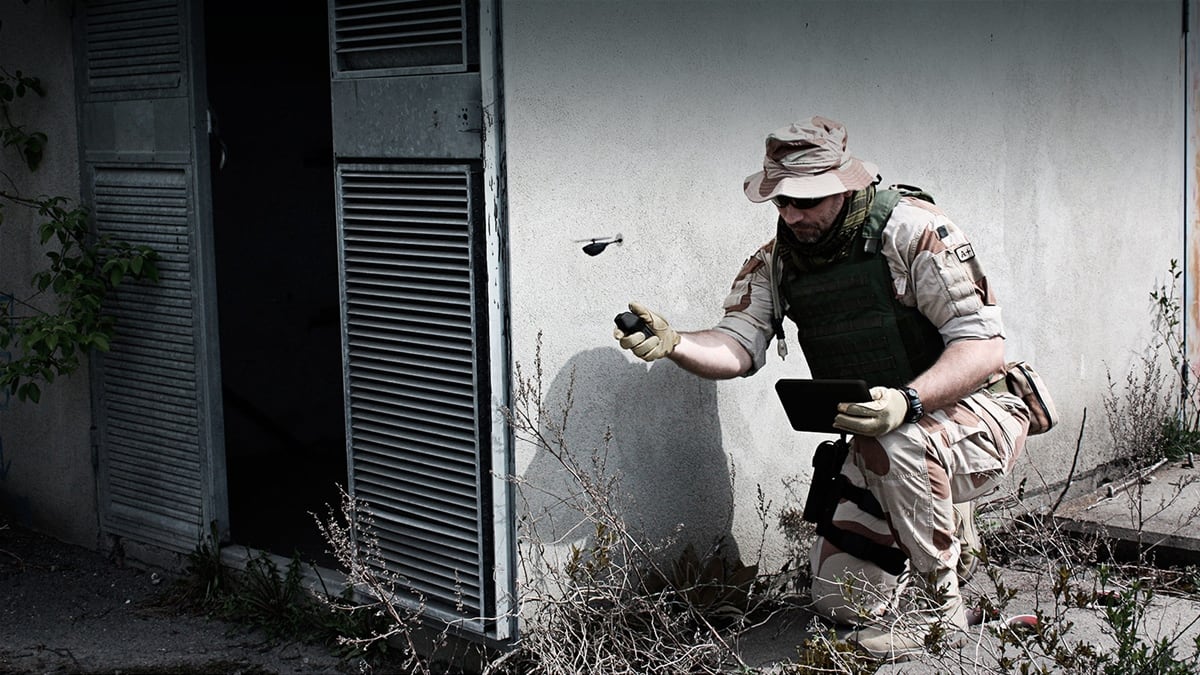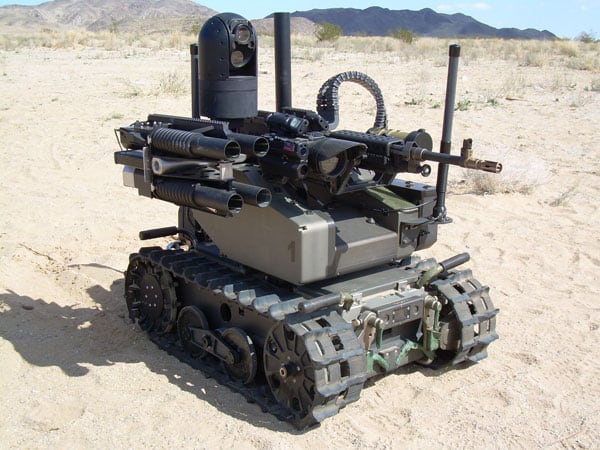CAMP PENDLETON, Calif. — The next member of your squad might carry a M240B machine gun with 400 rounds, a few sensors, and still manage to stay on pace for hours, despite weighing more than 350 pounds.
The Marine Corps Warfighting Laboratory hopes that a machine gun toting robot can one day provide more firepower to foot patrols. Qinetiq's Modular Advanced Armed Robotic System, a tracked robot with cameras and a machine gun, was on display at Marine West, a defense expo here on Jan. 28. at Camp Pendleton, Calif. It was one of the handful unmanned systems that attracted crowds at the event.
The Warfighting Lab said MAARS could give Marines additional protection on patrols and while standing on post, and the lab is in the process of determining if the device is a good fit for the Corps.
"It's a medium machine gun that's not typically taken on patrol, so it increases a Marine's firepower" said Tim Brooks, an applications engineer at the Marine Corps Warfighting Lab, said.
Operated with a handheld controller, it provides a surveillance feed from thermal and video cameras. It can "stand post" for 12 hours if it doesn't move much and just uses its cameras. It can also or it can be left in "sleep mode" for just over a week, Brooks said.
But it has limits, he Brooks said. It's too small to ram through doors to enter a room, and it's too big to move smoothly through tight corridors.
"We've found it's too small to do some things, too big to do others," he said.
It typically carries the machine gun, but it can also carry a quad 40mm M203 grenade launcher. So far it has has test-fired the machine gun in a lab setting, but not in the field. It has not yet fired a grenade, Brooks said.
MAARS isn't entirely new to the military. The Army previously tested the system in traffic control point drills and a hostage scenario where it fired on the enemy.
On the other end of the size spectrum, the Marine Corps' next drone might be small enough to stuff into a cargo pocket and weigh less than a can of dip.
Prox Dynamics is selling a micro-drone designed to give a squad of Marines their own tiny surveillance capability. The PD-100 Black Hornet weighs 18 grams and its body is around the size of a hummingbird Vienna sausage. It comes in a day version that snags full-motion video and a night version that can capture thermal images.

The Marine Corps Warfighting Laboratory is interested in the PD-100 Black Hornet, a small unmanned aircraft that can capture full-motion video and thermal images in real time.
Photo Credit: Prox Dynamics image
It's not supposed to replace other unmanned reconnaissance planes, but complement them, said Craig Palmer, an account manager with Prox Dynamics. Bigger aircraft can provide a real-time video feed of a rooftop captured from several hundred to thousands of feet above a target, but this can fly at near ground level and peek into buildings.
"You can fly down the street and look in a door," Palmer said.
Brooks said the Warfighting Lab his organization is interested in the system and is planning to evaluate it. Palmer said that there haven't been any U.S. sales to operational units so far, but Marines might have seen British forces use it in Afghanistan, and the Army's Program Executive Office Soldier has evaluated it as well
The twin-propeller is replaceable, and the system, which costs $55,000, comes with spare parts, a base station, two flyers, a steno pad-sized display screen, and a hand control. The whole package weighs three pounds.
Standard training takes two days, but a three-day session includes instruction on night operations, Palmer said.
It can fly in steady winds up to 17 miles per hour 15 knots per hour and gusts as high as 23 miles per hour 0 knots, Palmer said. At the expo, the UAV was flown inside a football field-sized tent, near an industrial fan, and was able to hold a stable position aloft in a gentle breeze.
It has as much as a 1.2 mile two-kilometer range, and can stay aloft for as long as 25 minutes, Palmer said.





